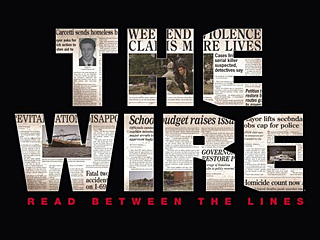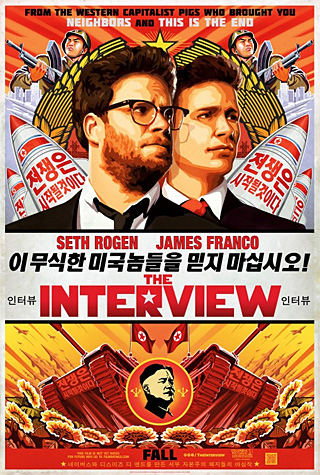Part of a series of posts about great film, web, or design artists and their work abuzz online and in-person.
- There’s a new debate about re-framing cinematography in post-production years later, not the way it was ever meant to be seen, but because it was captured in a way that now fit our 16:9 televisions and phones. David Simon, who created the show “The Wire,” has his critique of the re-alignment effort with videos comparing the 4:3 original and new 16:9 crop, presumably to sell a new Blu-ray edition. /Film has a clear overview of the issue with the so-called remasters. This hot topic gets talked about a lot by cinematographers, who usually aren’t involved with their shots being re-framed. Variety recently interviewed some DPs about where the collaboration often breaks down and composition goes separate ways.

The Wire. Poster design by Ignition.
- Stars of the big screen and little screen are doing something different. Julia Roberts and Harrison Ford among other name actors lend their voices to pro-environment adverts called “Nature is Speaking” for Conservation International, according to a write-up in The Guardian. The short-form videos are quite effective in using just a scripted voice-over to something you wouldn’t expect, therefore giving the advert more recognition. Then, on the small screen, there’s a great opinion piece in The New Yorker about how YouTube has graduated from amateur hour while one of their rivals, Vine, has become a hub for up-and-coming professional talent. According to the article, Vine really took off when mobile phones began to have better self-facing cameras. There’s also something to be said about very short storytelling online, since Vine limits you to six seconds. (Footnote: Vine is owned by Twitter, not YouTube.)
- Best reactions to the Sony hack / “The Interview” yank include Aaron Sorkin’s opinion piece in the New York Times. The co-editor of Variety also summarized his thoughts on how Sony and theater owners aren’t the bad guys. One issue that hasn’t been well reported comes via PBS Newshour and discusses the poor I.T. security at the studio and how the hack was easier than usual due to bad practices. After all of the drama, out of solidarity, small art house theaters around the country banded together to show the film as planned for Christmas Day despite the threats. This was followed by video-on-demand — renting or buying the film for a fee — thanks to Google Play, Microsoft XBox, and YouTube all stepping up. Inversely, this effect also made “The Interview” ineligible for any Oscars, since they frown upon films that debut online first. That’s the price to pay for finding a solution.

The Interview. Poster design by Ignition.



Commentary
Got something to add?